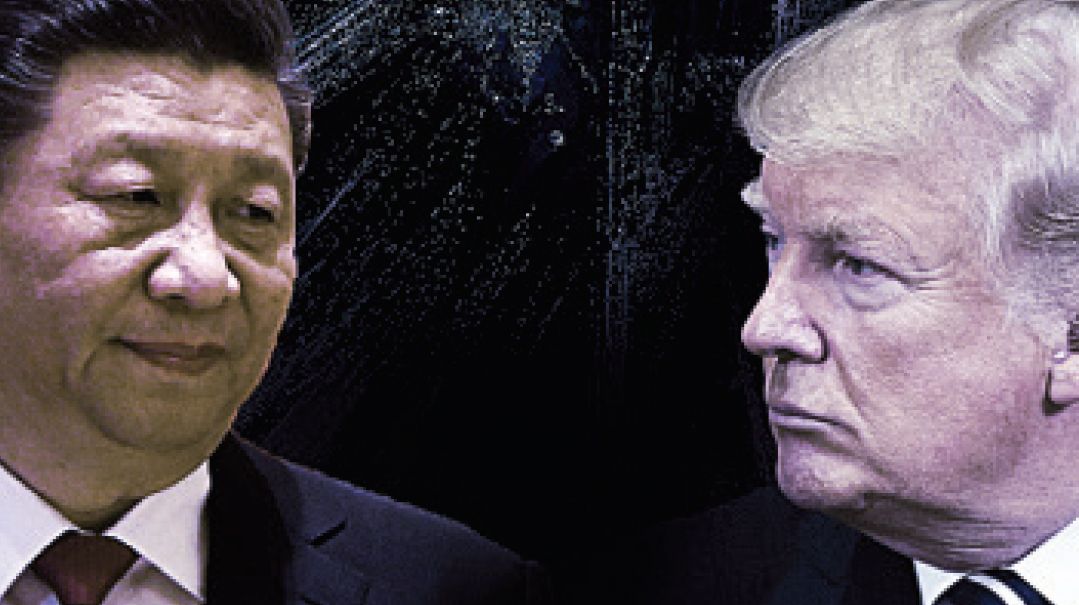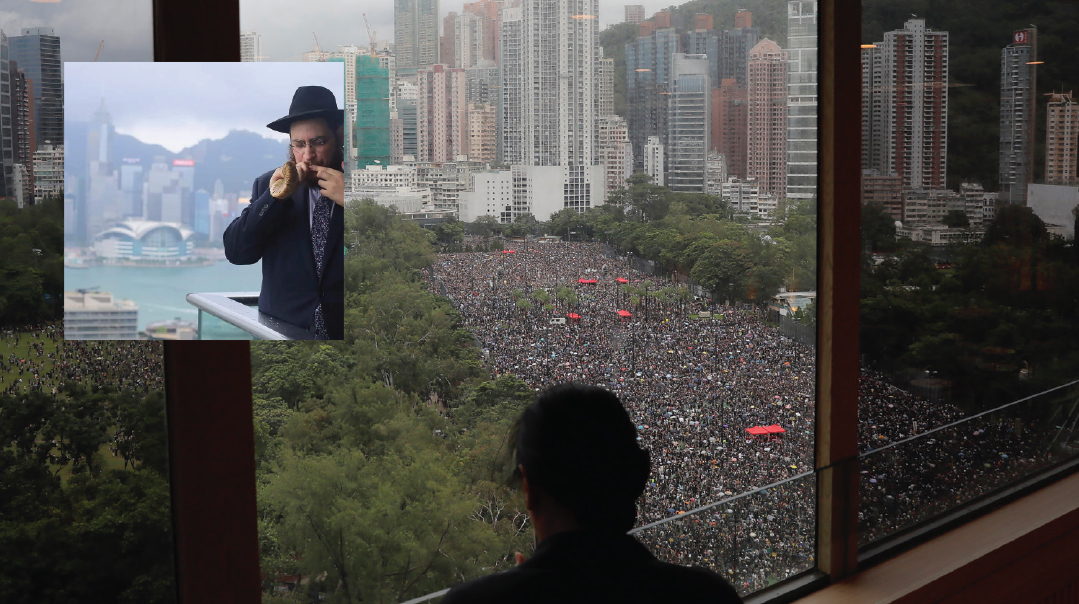Cold War: Made in China

China vs. USA — The post-corona superpower struggle heats up

March 2020 will go down in history as the month when coronavirus spread across the world, killing thousands and halting most economic activity. But in the world of geopolitics, it may also mark the point at which relations between China and the West plunged into a deep freeze, ending a half century of ever-growing integration.
As intensive care units from Italy to New York struggled to cope with unprecedented numbers of sick people, a desperate scramble began for life-saving medical equipment and ventilators. At that point foreign capitals discovered that — like most industrial goods — essential devices were made in China. As Beijing apparently held COVID-19 casualties to a few thousand, the country pulled off a PR coup by so-called “mask diplomacy,” shipping tons of protective equipment to virus-stricken Europe, in what European Union foreign policy chief Josip Borrell called “the politics of generosity.”
At the same time President Trump began calling the virus, whose official name is severe acute respiratory syndrome coronavirus 2 (SARS-CoV-2) the “China virus,” amid growing international calls for compensation in the trillions of dollars for Chinese negligence in covering up the extent of the threat.
The United States and China were already engaged in a trade war before coronavirus struck, and over the last decade Beijing has made no secret of its global political and military ambitions. The pandemic has only heightened the tension between the world’s two great superpowers, leading US secretary of state Mike Pompeo, among others, to describe the conflict with China as a kind of new cold war.
“This looks like a turning-point,” said Dr. Alan Mendoza, head of London’s Henry Jackson Society (HJS), a conservative think tank. “China is no longer satisfied being a quiet power. It’s challenging the American-led status quo. The idea that China is benign has gone out of the window. It’s the free versus the unfree world, and China is their champion. The key part is to recognize that we are in a contest with them, and then we can form policy.”
The status quo now under fire — what has been called Pax Americana — has been good for the world, with the US’s military might and unparalleled alliances presiding over seven decades of postwar prosperity and trade.
But China’s awesome rise threatens all of that. In the space of a few decades it has gone from a basket case to China Inc., a global economic powerhouse. With the largest economy in the world by one measure, it dominates manufacturing, producing 28% of the world’s goods in 2018. It is home to two of the world’s largest tech companies, Alibaba and Tencent, and is racing to corner the market on artificial intelligence and other emerging technologies.
And under Xi Jinping, China’s president since 2012, the country has been flexing its economic and political muscles internationally through the Belt and Road Initiative, an international program of infrastructure building intended to create a new Silk Road that connects all commerce to China.
Ever since the Berlin Wall came down in 1989, commentators have been trigger-happy when it comes to deploying the “Cold War” label. But this time looks different.
Post COVID-19, the US is pushing allies from Britain to Israel to curb Chinese investment, and is rethinking its military posture against Beijing. At the same time, others scoff at these efforts given China’s crucial place in the global economic system.
But as the world struggles to overcome coronavirus, are we on the edge of a new cold war, Made in China?
The Dragon Awakens
“There have been a few inflection points on the road to where we are today with China,” said Douglas Feith, a former US undersecretary of defense for policy in the George W. Bush administration, and now a senior fellow at the Hudson Institute. “One was the strategic play by Nixon and Kissinger of reaching out to China and creating a relationship that didn’t exist, as an element of Cold War strategy against the Soviets. That was not only sensible but brilliant.”
A second inflection point is when the US agreed to China joining the World Trade Organization in 2001, continues Feith. “There was hope that by promoting China’s technological and economic growth we were going to have a liberalizing effect. That’s when things began to be more hopeful than realistic, but even a skeptical person might have decided to try it.”
The third turning point was the result of a long internal process in Chinese power circles regarding its global military posture. “In April 2001 there was the incident of the EP-3,” said Feith, referring to the downing of a US military plane by Chinese forces. “It resulted in the cutoff of US-China defense talks which I was chairing. A significant part of our thinking then in Washington was that there is a debate among Chinese officials between those who wanted to continue Deng Xiaoping’s strategy of “hide your strength, bide your time” to integrate into advanced economies, and those who wanted a more aggressive and militaristic foreign policy.”
Twelve years later, said Feith, Xi Jinping’s rise to power can be considered the end of that debate: The militarists had won.
“China is now much more assertive, militarizing disputed islands in the South China Sea and ramming fishing vessels of neighbors,” concludes Feith. “The world has seen that China is not a cuddly panda bear.”
That new assertiveness is a product of a few factors. China weathered the 2008 recession well even as the mighty US stumbled. And the country’s economic champions have done very well since that time, as “Made in China” moves up the value chain. During Britain’s Industrial Revolution, Lancashire cotton merchants were said to dream of adding an inch to the shirttails of every person in China. Now Chinese merchants make those shirttails and almost everything else.
China dominates industries from air-conditioner manufacturing to shipbuilding and steelmaking. Huawei is now the world’s largest maker of telecommunications equipment, and is second only to Samsung as a smartphone manufacturer.
That economic heft is married to a sense of China’s rightful place as a world leader, as Financial Times journalist Gideon Rachman writes in his 2016 book Easternisation: “In Chinese history, foreign visitors to the imperial court were often treated as ‘barbarians’ who were expected to pay tribute to the emperor. There were echoes of this in the way that modern China’s leaders engage with the rest of the world, as I discovered in November 2013, as part of a small group of Western visitors received by President Xi Jinping in Beijing. There were plenty of eminent people in our party, yet foreign grandees were treated a bit like a class of schoolchildren.”
Trumpism’s Origins
China’s sense of its own growing stature received a rude shock with the election of Donald Trump, who vowed to slash the US trade deficit and bring back millions of manufacturing jobs from the Asian power — by economic force if necessary.
But the rise of that Trumpian policy was already in the making as early as 2012, when a report by the Economic Policy Institute revealed that between 2001 and 2011, more than 2.7 million American jobs, including 2.1 million in manufacturing, were lost to China.
Those stunning figures explain why Trump was successful in carrying key rustbelt swing states in 2016. But despite strong Democratic opposition to the trade war that he launched in 2018, it’s arguably on China policy that Trump has now succeeded in moving the needle on American public opinion. According to a recent Pew poll, 66% of Americans now view China unfavorably, up from 55% in 2016.
The 2020 election is now shaping up to be a China-bashing fest. “Beijing Biden” runs one Republican attack ad, seeking to paint the former vice president as beholden to China. “Tough talk, weak action” is Biden’s planned response to Trump, according to Reuters.
Among policymakers, the old China consensus is now history. Writing last week in the American Interest, noted political scientist Francis Fukuyama called Xi’s China an “aspiring totalitarian state” and said that “we are not dealing with the China of the 2000s but a completely different animal that represents a clear challenge to our democratic values. We need to hold it at bay until some point when it returns to being a normal authoritarian country.”
Sentiments like this were unthinkable just a few years ago, and so is the “gradual economic decoupling” that Fukuyama advocates.
But even post-coronavirus, how realistic is it to re-shore manufacturing in a world where all roads lead to China?
Matching Words and Deeds
“It’s very difficult to just bring back manufacturing,” said Dr. Alan Mendoza, whose Henry Jackson Society has released a report on how Western countries can break dependency on China for strategic products. “But a mixture of re-shoring in certain strategic industries, plus using other non-China suppliers is what we need to achieve.”
Clearly determined to make that happen, the US administration is considering both tax incentives and re-shoring subsidies to bring manufacturing back home. “We’ve been working on [reducing the reliance of our supply chains in China] over the last few years but we are now turbocharging that initiative,” Keith Krach, undersecretary for economic growth, energy, and the environment at the State Department told Reuters.
Part of that turbocharging involves leaning on allies to exclude China from investments and supply at critical points of the economy. Even pre-COVID-19, Trump was reported to have been “apoplectic” on a phone call with Boris Johnson, when the UK prime minister said that he wouldn’t ban Huawei from the country’s 5G networks. That pressure will ramp up in the post-coronavirus world.
Far more dependent on US goodwill is Israel, which has incurred American displeasure over Chinese investments in technology companies and the Haifa port, at which the US Navy ships regularly dock. With trade of about $14 billion in 2018, China has become Israel’s third largest trading partner since diplomatic relations were established in 1992. So far, Israel has been noncommittal in response to American requests to scale back Chinese investment.
Writing in the Wall Street Journal after Secretary of State Mike Pompeo raised the China issue with prime minister Binyamin Netanyahu recently, Hudson’s Douglas Feith said “Mr. Pompeo is making it clear that the world has entered a new era in its relations with China. In light of Mr. Xi’s ambitions, strategy, and actions, Israel should understand how US national-security officials perceive China — and how its entanglements with China will affect one of its prime strategic assets: its US alliance.”
What Do the Chinese Think?
If American allies are going to start saying a polite “no” to more Chinese investment, some observers think that’s a very bad idea. Speaking at a recent HJS-hosted webinar about his provocatively titled new book Has China Won?, former UN Security Council president Kishore Mahbubani said that the US had made a “major geopolitical mistake.”
“It has launched a contest without working out a long-term strategy,” he said. “The US is aware of its strengths but not its weaknesses, so there’s a strange ideological assumption that a contest between a democracy and an autocracy is always won by the democracy.”
In fact, he said, coronavirus shows how China can be more flexible and adaptive than the United States, and contrasted the upwardly mobile dynamism that he said is apparent in China with the “sea of despair” in which the lower 55% of US society lives. “That’s not the kind of vibrant society that George Kennan said that you need to defeat the Soviet Union,” said Mahbubani, referring to the architect of US Cold War policy.
HJS’s Alan Mendoza agrees to the Soviet comparison, not the analysis. “A good China strategy is containment. It’s what we did with the Soviets post-1945, to match them militarily, economically outperform them, and make Western values mote attractive over time. We don’t want military action, and we want to trade with them, not cut them off completely given China’s size.”
The Soviet Union doesn’t provide a ready-made playbook for China, according to Feith, but we can seek guidance in the history of the Cold War. “The circumstances were very different from China. The Soviets were vulnerable to economic isolation because they were chronically short of foreign reserves, whereas China has enormous reserves of cash. It also plays a huge part in the world economy unlike the USSR. I favor economic measures, but they have to take that economic power into account.”
If Cold War Two is to go America’s way, that will depend on forging an alliance of democratic countries — a prospect that seems distant when Trump is as likely to pick a fight with Canada and the EU as with China.
“Trump may not be interested in alliances, but people around Trump are interested in conventional alliances,” said Mendoza. “And when a threat becomes obvious it makes it hard to ignore. The debate around the performance of the World Health Organization in coronavirus is now led by Europeans and Australians, which is fascinating because the Europeans have realized that it’s in their interest to be more assertive.”
Since Xi Jinping came to power in 2012, China and the West have been locked in a race that many in the West refused to acknowledge. That began to change when Donald Trump challenged the supine China policy that had taken root as American jobs and technological advantages vanished.
But COVID-19 has torn away the mask, and a Great Power rivalry means that allies such as Israel will have to maintain a delicate balancing act. Even if it doesn’t draw the whole world into a new cold war, the 21st century is now the US-China century.
(Originally featured in Mishpacha, Issue 812)
Oops! We could not locate your form.












